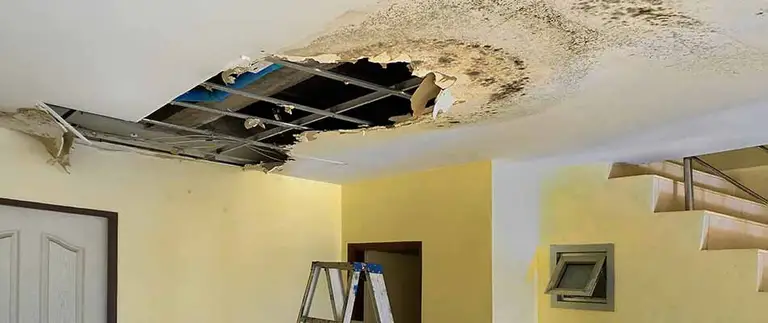How to Fix a Leaking Roof Before It Gets Worse

Strong 8k brings an ultra-HD IPTV experience to your living room and your pocket.
A leaking roof is more than just an inconvenience—it’s a threat to your home’s structure, insulation, and safety. Left unaddressed, even a small leak roof can lead to mold, rot, damaged ceilings, and costly repairs. The good news? If you act fast, you can fix or contain the leak before it escalates. This guide breaks down how to identify, contain, and fix a leaking roof before it gets worse.
Signs Your Roof Is Leaking
The first step in fixing a roof leak is recognizing the warning signs. Obvious indicators include:
- Water stains on ceilings or walls
- Damp insulation or attic space
- Dripping during rain
- Musty smells
- Bulging drywall or peeling paint
Often, leaks begin subtly. If you spot any of these symptoms, it’s crucial to inspect your roof immediately.
Common Causes of Roof Leaks
Understanding what causes leaks helps prevent future damage. The most common culprits include:
- Broken or missing shingles
- Cracked flashing or sealant failure around vents and chimneys
- Clogged gutters causing water backup
- Damaged underlayment or roof decking
- Ice dams in colder climates
Wind, debris, and aging materials can all compromise your roofing system over time.
Temporary Fixes to Stop the Leak
If you can’t fix the leak permanently right away, a temporary patch can prevent further water intrusion:
- Tarp the Area: Use a waterproof tarp over the affected part of the roof. Secure it tightly with nails or screws and weigh down the edges.
- Apply Roofing Tape or Sealant: For minor leaks, roofing tape or caulk/sealant can provide a short-term barrier against water.
- Catch Interior Drips: Place buckets or containers under active leaks to protect your floors. Poke a small hole in bulging ceilings to let water drain safely.
These emergency steps buy time and limit interior damage until a full repair is done.
How to Find the Leak Source
Roof leaks don’t always originate where the water appears inside. To trace the source:
- Inspect your attic for wet spots, mold, or daylight shining through the roof.
- Look directly above the ceiling stain—water follows rafters and slopes.
- Check around roof penetrations like skylights, vents, or chimneys.
- If safe, inspect the roof for broken shingles, flashing, or pooling water.
If the leak isn't obvious, consider a water hose test or hiring a roofing expert to pinpoint the breach.
Permanent Roof Leak Repair Steps
Once you've located the leak, follow these steps to make a lasting repair:
Replace Damaged Shingles
Lift the broken shingle and remove nails. Slide in a new shingle and secure it with roofing nails, sealing with tar if necessary.
Repair Flashing
Pry up faulty flashing and apply roofing cement beneath. Press new flashing in place and seal all edges to prevent water entry.
Seal Minor Cracks or Holes
For small gaps, use roofing caulk or cement to create a watertight seal over the affected area.
Clear Gutters & Downspouts
Blockages can cause roof overflow and leaks. Clean debris and ensure water flows freely away from the roofline.
If the damage is extensive or spans multiple areas, call a licensed roofing contractor. DIY repairs are best for small, isolated leaks.
How to Prevent Future Roof Leaks
- Inspect your roof twice a year, especially after storms.
- Trim overhanging branches to prevent impact damage.
- Keep gutters and downspouts clean and flowing.
- Replace aging shingles and flashing proactively.
- Install proper attic insulation and ventilation to avoid moisture buildup.
Routine maintenance extends your roof’s lifespan and reduces the chance of sudden leaks.
When to Call a Professional Roofer
If your roof is over 15 years old, has multiple leak points, or the damage is in hard-to-access areas, it’s best to contact a roofing specialist. A certified roofer can assess structural integrity, recommend long-term solutions, and perform safe, guaranteed repairs.
Final Thoughts
A leaking roof never gets better with time—only worse and more expensive to fix. Acting quickly with a temporary fix and scheduling a permanent repair can save you thousands in long-term damage. Stay vigilant, inspect regularly, and don’t hesitate to call a professional if you're unsure about tackling the repair yourself.
FAQs
What is the most common cause of a leaking roof?
The most common causes include missing or damaged shingles, cracked flashing, worn sealants around vents or chimneys, and clogged gutters. Over time, weather and aging materials can also contribute to leaks.
Can I fix a leaking roof myself?
Small leaks can be temporarily patched using roofing tape, tar, or a tarp. However, permanent repairs—especially on pitched or high roofs—are best handled by licensed roofing professionals to ensure safety and quality.
How do I locate the source of a roof leak?
Start by inspecting your attic for water stains, mold, or sunlight coming through. Follow water paths from the ceiling stain upward. Outside, check for damaged shingles, flashing, or pooling water.
Is a leaking roof an emergency?
Yes. Even a minor leak can lead to structural damage, mold growth, and ruined insulation. Acting quickly helps minimize repair costs and prevents further water damage.
How much does it cost to repair a leaking roof?
Roof leak repairs typically range from $150 to $1,000+, depending on the severity, location, and materials needed. Severe or widespread damage may require partial or full roof replacement.
Note: IndiBlogHub features both user-submitted and editorial content. We do not verify third-party contributions. Read our Disclaimer and Privacy Policyfor details.



